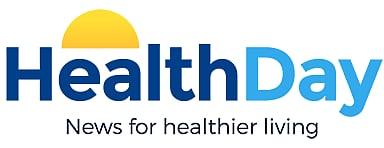Here are what the editors at HealthDay consider to be the most important developments in Ophthalmology for October 2016. This roundup includes the latest research news from journal articles, as well as the FDA approvals and regulatory changes that are the most likely to affect clinical practice.
Few Changes in Employer-Sponsored Insurance 2013-2014
MONDAY, Oct. 31, 2016 (HealthDay News) -- Private sector employer-sponsored health insurance offerings were similar in 2013 and 2014, with <3.5 percent of employers dropping coverage and 1.1 percent adding coverage, according to a report published online Oct. 26 in Health Affairs.
Abstract
Full Text
Useful Tips Offered for Addressing Negative Patient Reviews
FRIDAY, Oct. 28, 2016 (HealthDay News) -- In an article published in Medical Economics, five tips are presented to address negative patient reviews.
More Information
Subconjunctival Gentamicin Can Cause Macular Necrosis
THURSDAY, Oct. 27, 2016 (HealthDay News) -- Subconjunctival gentamicin can cause macular necrosis in the eye, according to a letter to the editor published online Oct. 20 in Clinical & Experimental Ophthalmology.
Full Text (subscription or payment may be required)
Barriers for Diabetic Retinopathy Screening Vary
THURSDAY, Oct. 20, 2016 (HealthDay News) -- Patients and health care providers have markedly divergent perceptions of barriers to diabetic retinopathy screening, according to a study published in the Oct. 6 issue of the U.S. Centers for Disease Control and Prevention's Preventing Chronic Disease.
Full Text
Treated Diabetic Retinopathy Rare in Children With T1DM
WEDNESDAY, Oct. 19, 2016 (HealthDay News) -- Treated diabetic retinopathy (DR) is extremely rare among children with type 1 diabetes, according to research published online Oct. 7 in Diabetes Care.
Full Text (subscription or payment may be required)
Topotecan-Based Therapy Beneficial for Retinoblastoma
TUESDAY, Oct. 18, 2016 (HealthDay News) -- For patients with advanced retinoblastoma, topotecan combined with vincristine, carboplatin, and aggressive focal therapies is effective, according to a study published online Oct. 10 in the Journal of Clinical Oncology.
Abstract
Full Text (subscription or payment may be required)
Lower Monthly Premiums for Narrow-Network Plans
MONDAY, Oct. 17, 2016 (HealthDay News) -- Narrow-network health insurance plans have lower monthly premiums than larger-network plans, according to a study published in the October issue of Health Affairs.
Abstract
Full Text (subscription or payment may be required)
Copay Assist Programs Creating Problems in Health Care Markets
TUESDAY, Oct. 11, 2016 (HealthDay News) -- Despite offering assistance to individuals who cannot afford expensive medications, copay assistance programs create broader problems in health care markets, according to an Ideas and Opinions piece published online Oct. 11 in the Annals of Internal Medicine.
Full Text (subscription or payment may be required)
U.S. Health Care System Is One of the Least Efficient Worldwide
MONDAY, Oct. 10, 2016 (HealthDay News) -- The U.S. health care system is one of the least efficient worldwide based on a Bloomberg index that assesses life expectancy, health care spending per capita, and relative spending as a share of gross domestic product, according to a report published by Bloomberg.
More Information
Strategies Presented for Managing Physician Burnout
FRIDAY, Oct. 7, 2016 (HealthDay News) -- Effective strategies for managing physician burnout include mindfulness and stress-management training, according to a review published online Sept. 28 in The Lancet.
Full Text (subscription or payment may be required)
Editorial (subscription or payment may be required)
Doctors Spending in Excess of $32,000 on Health IT
TUESDAY, Oct. 4, 2016 (HealthDay News) -- Doctors are spending more than $32,000 per year on health information technology (IT), according to an article published in Medical Economics.
More Information
New AMA Module Helps Identify Physician Distress
MONDAY, Oct. 3, 2016 (HealthDay News) -- A new resource has been developed to help physicians identify distressed colleagues and help them to access care, according to a report published by the American Medical Association (AMA).
More Information

